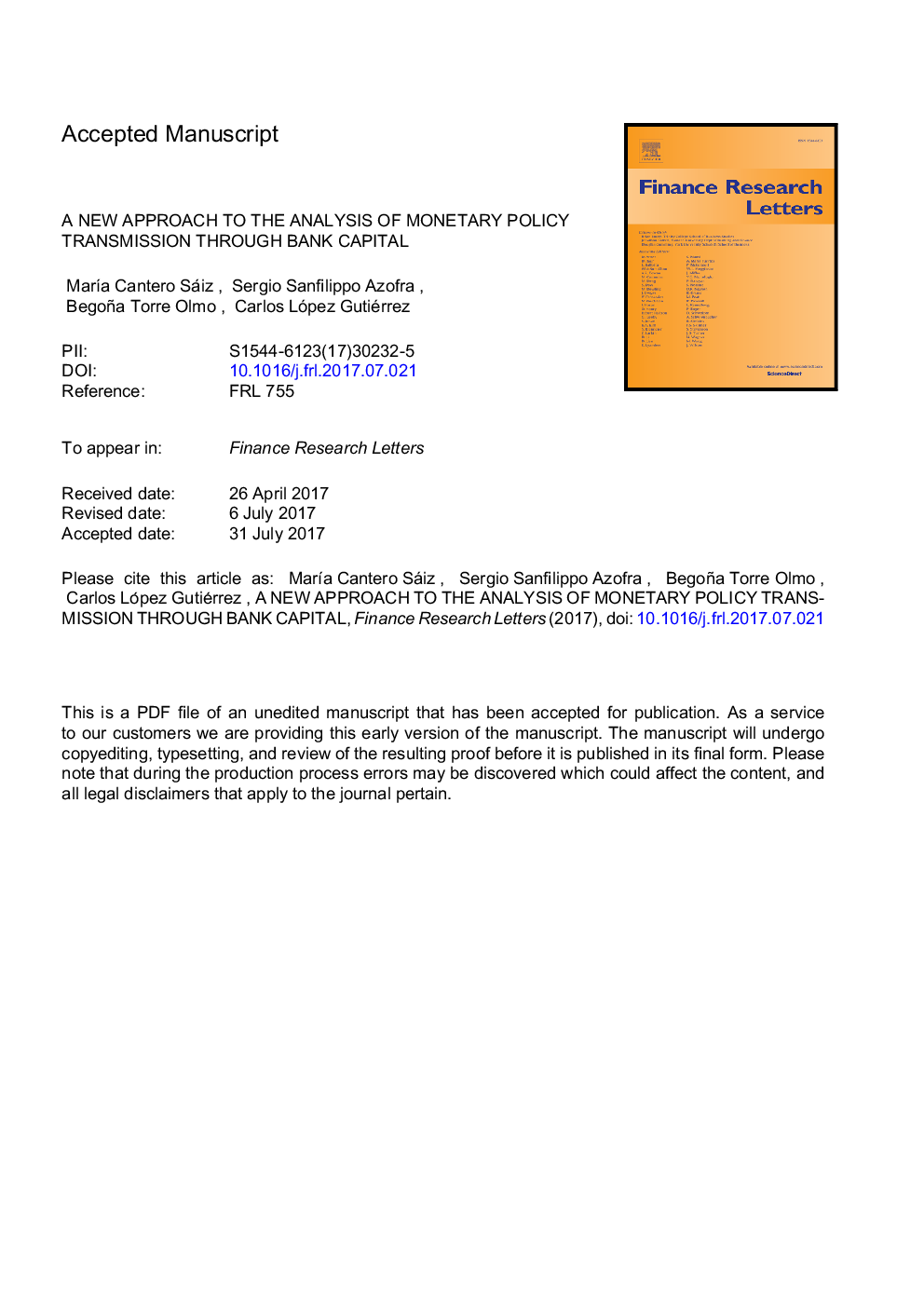| Article ID | Journal | Published Year | Pages | File Type |
|---|---|---|---|---|
| 7352126 | Finance Research Letters | 2018 | 16 Pages |
Abstract
The purpose of this article is to quantify how bank capital determines the effects of monetary policy on bank lending. Additionally, we test how these effects differ during monetary contractions and expansions. Using a sample of 3,028 European banks between 1999 and 2012, we find that the reduction in loans caused by monetary restrictions is similar across banks regardless of their capital. In addition, during monetary expansions, banks increase their loan supply more as they become better capitalized. Contrary to previous studies, there are differences in the monetary policy transmission through capital only during expansionary monetary regimes. These results are relevant because previous studies have not measured how the marginal effect of monetary policy on the growth of loans varies with the value of capital. We contribute to the existing literature by using a new approach that quantifies this marginal effect, which considerably improves the interpretation of statistical results from models that include continuous variable interactions and allows a better understanding of the role of bank capital in the transmission of monetary shocks.
Related Topics
Social Sciences and Humanities
Economics, Econometrics and Finance
Economics and Econometrics
Authors
MarÃa Cantero Sáiz, Sergio Sanfilippo Azofra, Begoña Torre Olmo, Carlos López Gutiérrez,
